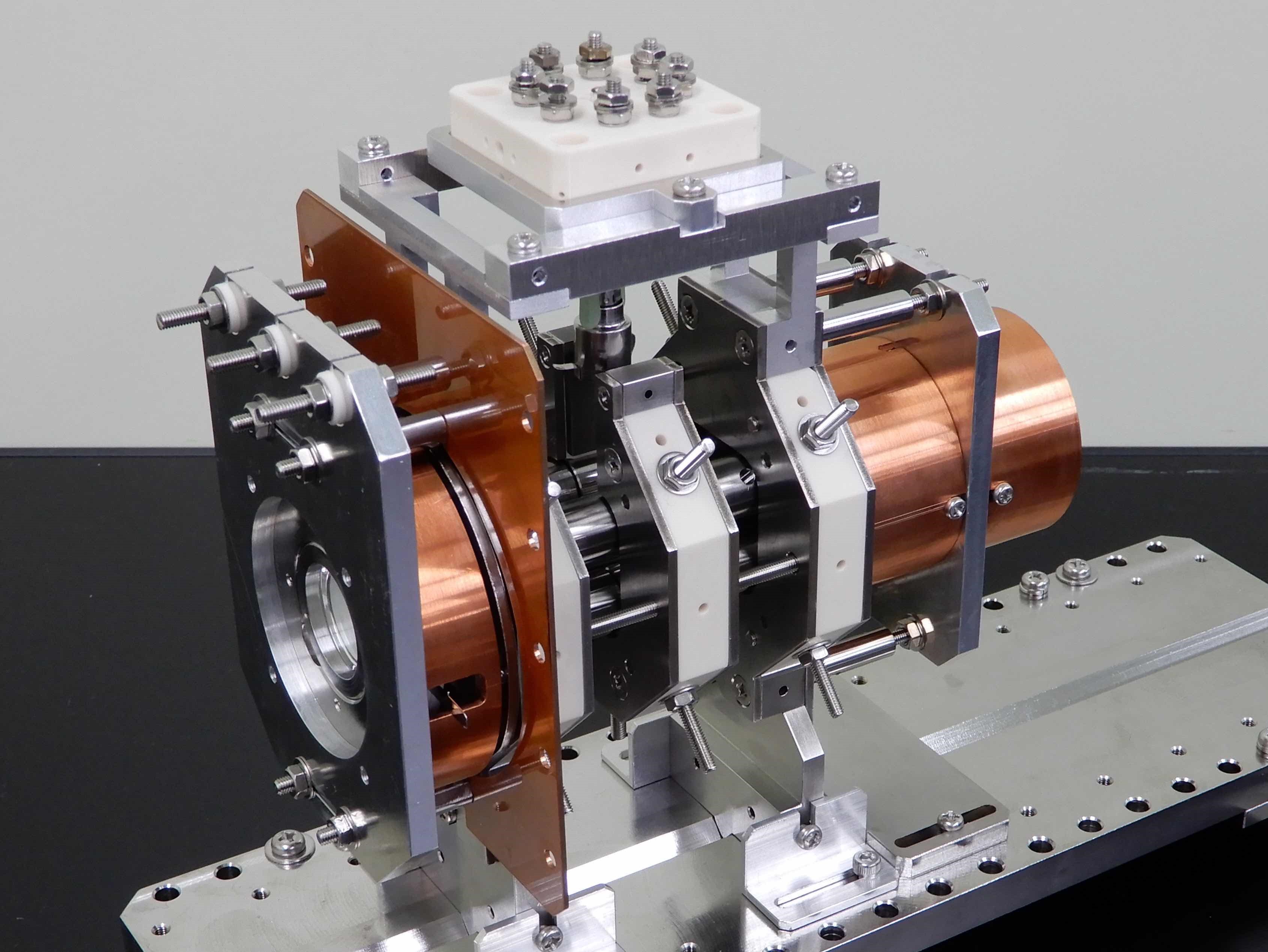Key points of this research results
- A compact experimental system named “S-POD” has been constructed, which enables one to perform systematic design studies of large-scale, high-energy particle accelerators in a local tabletop environment.
- The S-POD system optimized for the study of linear ion accelerators was employed to explore the stability of intense ion bunches of ellipsoidal and spherical configurations.
- This new experimental technique revealed the dangerous parameter ranges where serious beam loss may occur due to resonant instability.
Outline
Charged-particle beams generated by particle accelerators have been utilized in various research fields including fundamental physics, radiation therapy, industry, life and material sciences, etc. Deepening the current understanding of the physical property of a charged-particle beam (in other words, a complex nonlinear many-body system composed of a huge number of Coulomb interacting particles) is essential to design high-performance accelerators for diverse applications.
We have developed a novel tabletop system to conduct systematic experimental studies of charged-particle beams. The system is called “S-POD” (Simulator of Particle Orbit Dynamics), which produces an ion cloud physically equivalent to a relativistic charged-particle beam observed in the center-of-mass frame. In this research, attention was paid to the dynamics of a short ion bunch (i.e., ellipsoidal or spherical ion beams) typical in linear accelerators.
The picture below shows the radio-frequency ion trap designed particularly for the present purpose. We can control the external ion confinement potential flexibly to search for the parameter range where the ion cloud becomes unstable. The existence of various low-order resonance bands and their dependence on beam density have been experimentally confirmed for the first time. The data obtained with the S-POD can be used to improve the performance of existing machines around the world as well as to make reliable designs of next-generation linear accelerators.

Reference
M. Goto, C. Ichikawa, K. Ito, K. Kojima, and H. Okamoto, Stability study of intense hadron bunches in linear accelerators using a Paul ion trap, (Editors’ suggestion) Physical Review Accelerators and Beams 25, 054201 (2022). https://doi.org/10.1103/PhysRevAccelBeams.25.054201

 Home
Home



